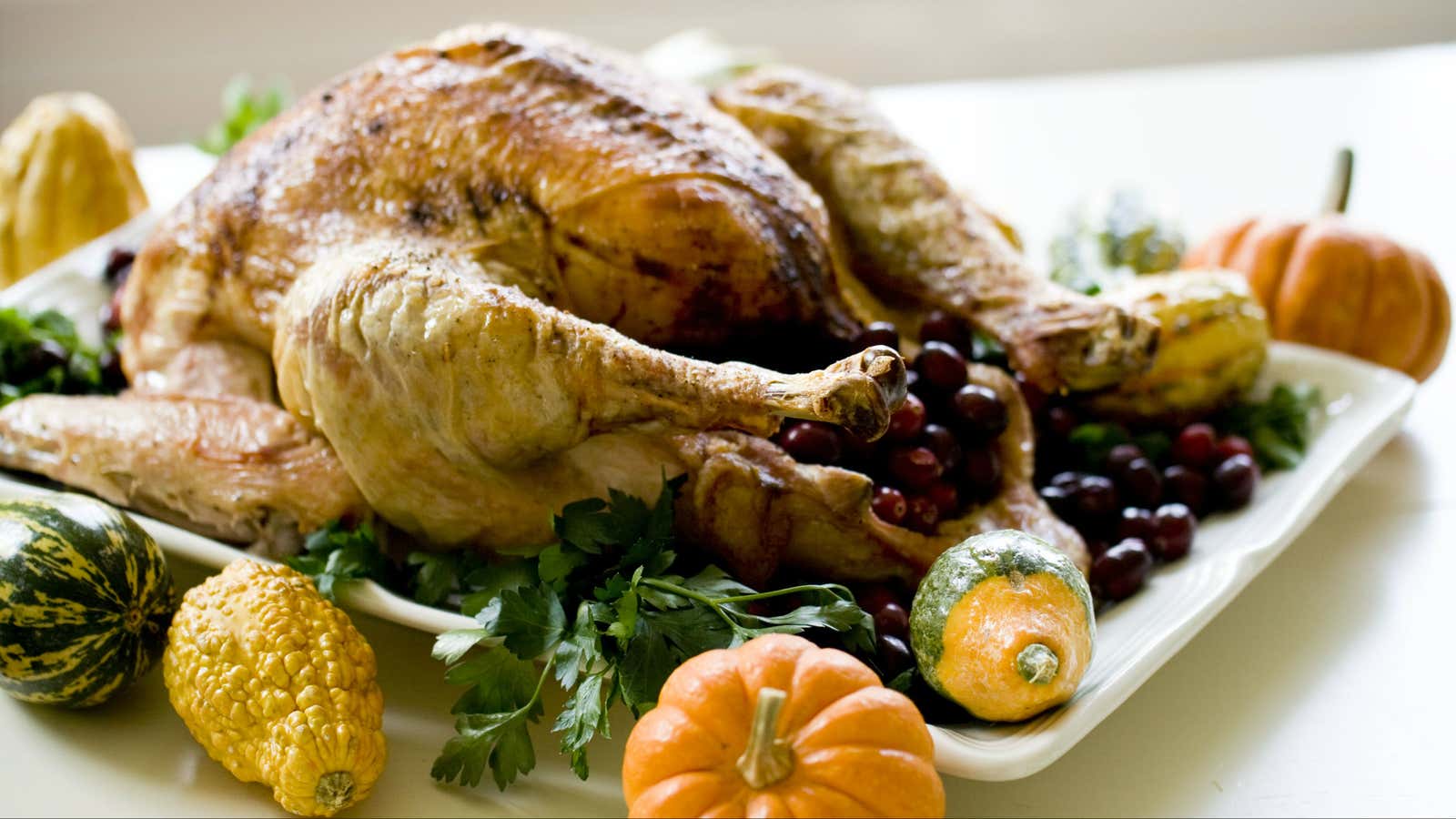It’s a topic of perpetual debate, especially this time of year: To brine or not to brine?
Common wisdom says that brining a turkey, or soaking it in a bath of saltwater (plus extras, depending on the recipe), is the best way to make a juicy bird. Heck, even Martha Stewart says to do it that way. But the common wisdom is wrong.
As BuzzFeed showed in a 13-person taste test, a brined turkey may be moist, but it is also flavorless and boring. The skin doesn’t crisp. The taste doesn’t wow. But that leaves home chefs with a problem: How do you get a turkey that is both juicy and flavorful?
The answer is simpler than soaking: Use a dry brine, aka a rub.
Here’s why:
Wet and dry brines serve the same basic function: Both are vehicles for salt, which dissolves muscle protein and helps flesh loosen up to absorb extra liquid, as scientist-chef J. Kenji López-Alt explained to Quartz. Salt, in theory, makes for a moister, more tender bird.
But when you use a wet brine, a lot can go wrong. Water goes in and flavor compounds go out, leaving the turkey’s taste in the brining bucket instead of in the meat where they belong, says López-Alt. BuzzFeed’s resident cooking genius, Christine Byrne, has a rival theory: The extra moisture actually cooks off in the oven, leaving the turkey even drier than had it not been brined at all. Either way, an unpleasant mouthful.
In a dry brine, however, experts agree: something extraordinary happens.
First the salt draws the turkey’s own juices out. Then the turkey sucks those natural juices back in. As explained on cooking blog the kitchn:
First, the salt draws out the meat juices through osmosis. Next, the salt dissolves into the juices, essentially turning into a “natural” brine even though there isn’t any added liquid. And finally, this brine is reabsorbed into the meat and starts breaking down tough muscle proteins, resulting in juicy, tender, seasoned meat.
The other benefit of a dry brine is the crispy skin, which is the result of brining the turkey uncovered or loosely covered in the fridge, rather than submerged in water. This causes the skin to dry out, letting it cook crispy, instead of rubbery.
A dry brine can be as simple as plain old salt, but for extra flavor, it can also incorporate sugar, other herbs or butter. López-Alt recommends one tablespoon of salt for every five pounds of meat. You can take that up a notch with this dry brine from Byrne, or for something spicier, the kitchn recommends mixing in some dried herbs like thyme, sage, rosemary or a blend.
A juicy bird with all its natural flavor and a crispy skin? That’s something to be thankful for.
